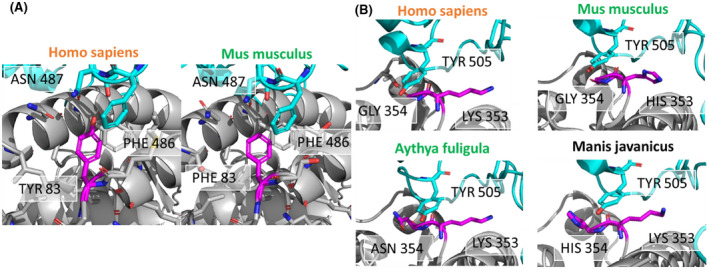FIGURE 6.

Binding interactions of ACE2 positions 83 and 354 differ across susceptible and non‐susceptible species. (A) ACE2 position 83 (magenta) is a tyrosine in the human susceptible species (left) and phenylalanine in the non‐susceptible mouse species (right). Tyrosine 83 of human ACE2 interacts with asparagine 87 of SARS‐CoV‐2 RBD, probably via a hydrogen bond. Phenylalanine in mouse ACE2 cannot interact with asparagine 487 due to the lack of a hydrogen bond donor. (B) Interactions of tyrosine r505 of the SARS‐CoV‐2‐RBD (cyan) with ACE2 residues 353 and residue 354 (magenta). ACE2 residue 353 is conserved as lysine with the only exception of histidine in the mouse ACE2. ACE2 residue 354 is glycine in the susceptible species (human), but an asparagine in non‐susceptible duck and chicken, and histidine in pangolin (unknown susceptibility). Species names in orange are susceptible, green are non‐susceptible, and black are unknown
